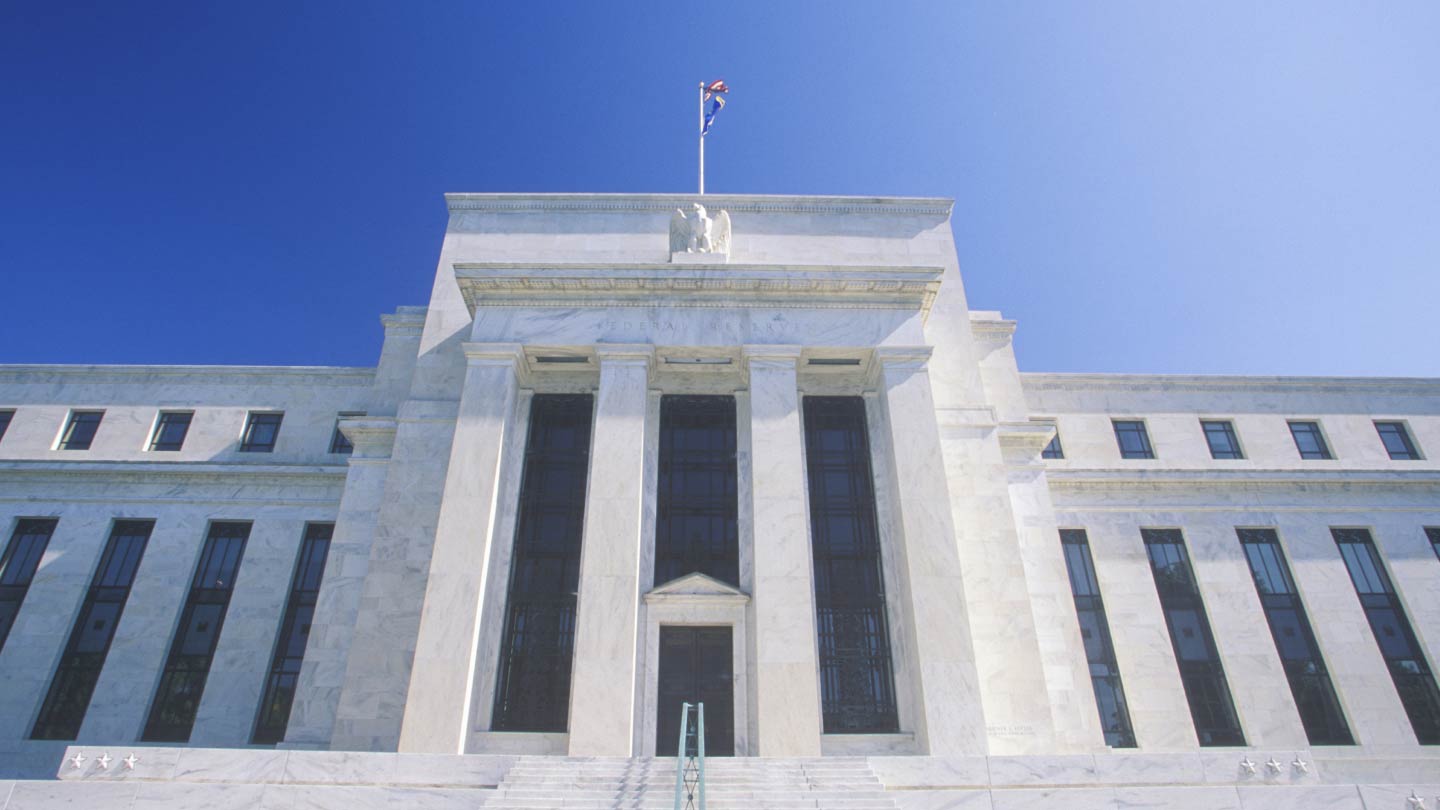
Key takeaways
- In light of recent changes to the Fed’s governing board, J.P. Morgan Global Research now looks for the next rate cut to take place in September.
- The deceleration in hiring seen in the July jobs report could also point to an imminent rate cut.
- After September, the Fed is expected to make three more 25 bp cuts at subsequent meetings before pausing indefinitely.
All eyes are on the Federal Reserve, which recently appointed a new governor. On August 8, President Trump nominated Stephen Miran, chair of the Council of Economic Advisers, to fill a temporary seat on the Fed’s governing board after Adriana Kugler’s surprise decision to step down.
How might this shape the Fed’s stance on monetary policy, and how does it alter the outlook for rate cuts?
“For Fed chair Jerome Powell, the risk management considerations may go beyond balancing employment and inflation risks, and we now see the path of least resistance is to pull forward the next cut of 25 bp to the September meeting.”

Michael Feroli
Chief U.S. economist, J.P. Morgan
When could the next Fed rate cut be?
In light of the recent board changes, J.P. Morgan Global Research now looks for the next Fed rate cut to occur in September.
An advocate for easing, Miran could tip the scales toward a cut. “Historically, new governors or Fed presidents have sometimes abstained from voting at their first FOMC meeting. We suspect that may not be the case now. In the off-chance that Miran is confirmed as governor by the time of the next meeting, that could imply three dissents in favor of a cut,” said Michael Feroli, chief U.S. economist at J.P. Morgan. “For Fed chair Jerome Powell, the risk management considerations at the next meeting may go beyond balancing employment and inflation risks, and we now see the path of least resistance is to pull forward the next cut of 25 basis points (bp) to the September meeting.”
Thereafter, the Fed is expected to make three more 25 bp cuts at subsequent meetings before pausing indefinitely. This will bring the target range for the policy rate to 3.25–3.5% by the end of the first quarter of 2026.
Do economic conditions support a rate cut?
Of course, the health of the labor market and the broader economy will still factor into the Fed’s decision to cut rates. As it stands, the deceleration in hiring seen in the July jobs report could point to an imminent rate cut.
“If labor markets remain solid, we would expect that FOMC members would prefer to wait and see how tariffs pass through to inflation, even if they are ultimately expected to be a one-off price level adjustment. However, the weakness in job growth is great enough that the FOMC can reasonably argue it needs to manage downside risks by cutting rates,” Feroli noted.
A deterioration in employment could also determine the size of the next rate cut. “At the last FOMC meeting, Powell framed labor market risks in the context of the unemployment rate. Simplifying to that one dimension, a rate of 4.4% or higher could get a larger-sized cut at the next meeting, while a rate of 4.1% or lower could prompt a few dissents for a full employment, above-target inflation cut,” Feroli added.
Concerns around inflation remain, however, which suggests the FOMC could deliver a split decision at the September meeting. “It’s not unprecedented for the Fed to ease when stocks are at or near all-time highs. It’s rarer when stocks are at the highs and inflation is above target and inflecting higher. So, an ease next meeting isn’t likely to be broadly welcomed by the Committee,” Feroli said.
Related insights
-

9:45 - Global Research
July jobs report: A marked slowing in job creation
August 01, 2025
-

Global Research
Global inflation forecast: Will prices come down in 2024?
February 09, 2024
Inflation is easing, but will central banks achieve their targets in 2024? J.P. Morgan’s economists share their projections.
-

Global Research
Global Research
Leveraging cutting-edge technology and innovative tools to bring clients industry-leading analysis and investment advice.
This material (Material) is provided for your information only and does not constitute: (i) an offer to sell, a solicitation of an offer to buy, or a recommendation for any investment product or strategy, or (ii) any investment, legal or tax advice. The information contained herein is as of the date and time referenced in the Material and J.P. Morgan does not undertake any obligation to update such information. J.P. Morgan disclaims any responsibility or liability, whether in contract, tort (including, without limitation, negligence), equity or otherwise, for the quality, accuracy or completeness of the information contained in this Material, and for any reliance on, or uses to which, this Material, is put, and you are solely responsible for any use to which you put such information. Without limiting any of the foregoing, to the fullest extent permitted by applicable law, in no event shall J.P. Morgan have any liability for any special, punitive, indirect, or consequential damages (including lost profits or lost opportunity), in connection with the information contained in this Material, even if notified of the possibility of such damages. Any comments or statements made herein do not necessarily reflect those of J.P. Morgan, its subsidiaries or its affiliates.
All materials and information shared with you are, unless otherwise indicated to you, proprietary and confidential to J.P. Morgan. You are hereby notified that any disclosure, dissemination, copying, distribution, or use of the information provided to you, in whole or in part, other than as expressly permitted by J.P. Morgan, is STRICTLY PROHIBITED. You are permitted to disclose the materials and information to your officers and employees on a need to know basis. Should you have any questions regarding this, please contact your usual J.P. Morgan contact. For further information please visit: https://www.jpmorgan.com/pages/disclosures/materialdisclaimer.
© 2025 JPMorgan Chase & Co. All rights reserved. J.P. Morgan is a marketing name for businesses of JPMorgan Chase & Co. and its subsidiaries and affiliates worldwide. JPMorgan Chase Bank N.A. (member of FDIC), J.P. Morgan Securities LLC (member of FINRA, NYSE and SIPC), J.P. Morgan Securities plc (member of the London Stock Exchange and authorized by the Prudential Regulation Authority (PRA) and regulated by the Financial Conduct Authority and the PRA) and J.P. Morgan SE (authorised by the BaFin and regulated by the BaFin, the German Central Bank and the European Central Bank) are principal subsidiaries of JPMorgan Chase & Co. For legal entity and regulatory disclosures, visit: www.jpmorgan.com/disclosures. For additional regulatory disclosures, please consult: www.jpmorgan.com/disclosures.